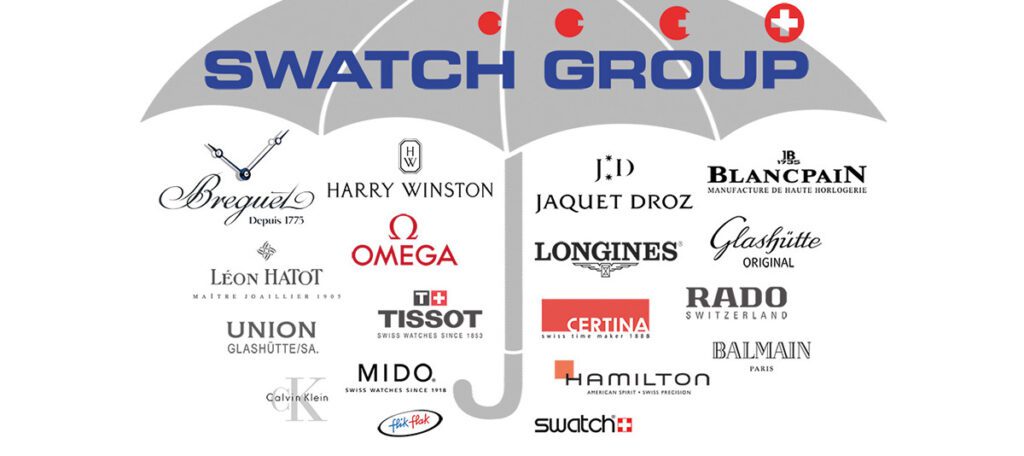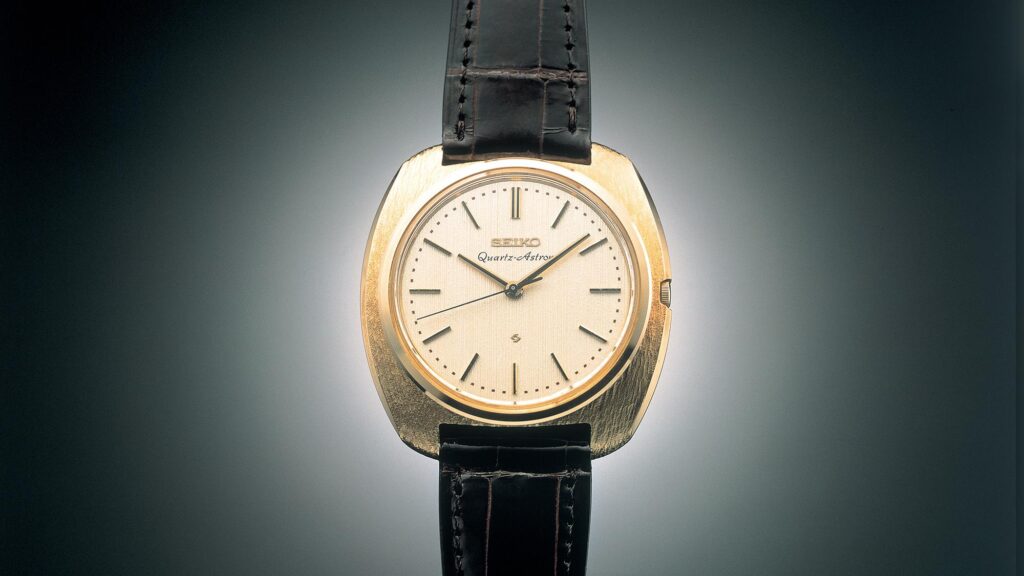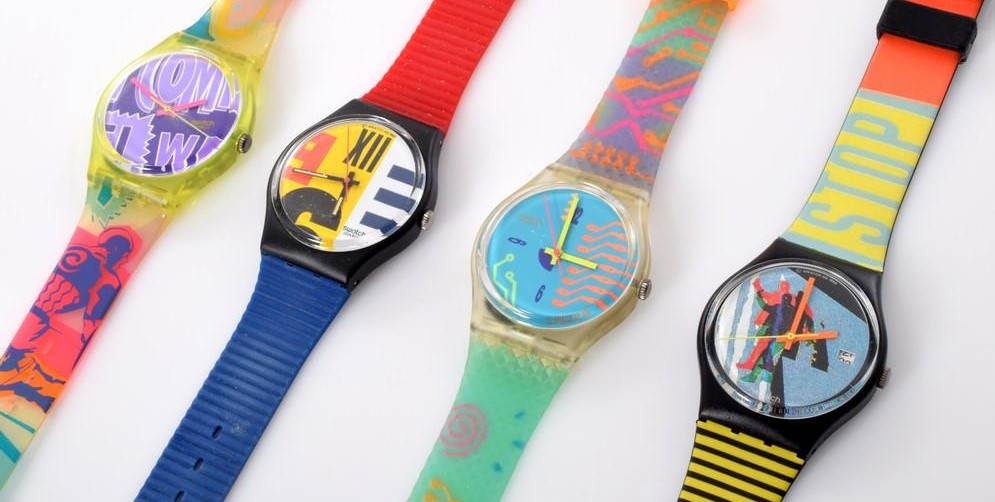
Swatch: The name brings to mind a popular 80s and 90s watch brand that rings nostalgic to many fans. An abbreviation of “second watch”, the brand itself was meant to be a backup to any favorite Swiss timekeeper (e.g. Rolex, Tissot, Omega, etc..). However, as a watch conglomerate, Swatch now boasts over $7billion in annual sales. How is this so? Well, it all started in the 1930s when Swiss banks, the Swiss government, and Swiss brands Omega and Tissot put together watchmaking groups to take on the economic rigors of the Great Depression. As it went, competition in the watchmaking industry developed Swiss alliances to support Switzerland’s popular export for decades afterward. With history moving forward, the rising tide of electronic watch technology would come to lay the foundation for an eventual Swatch empire. Today, we’ll be touching on the building blocks that lead to Swatch’s powerful status in the modern watch industry.
SSIH
and ASUAG
Back when Swatch was just a twinkle in Switzerland’s eye, there was global economic strife. Banks began failing and by the early 1930s economies worldwide were feeling the pressure to stay afloat. In light of these trying times, the two major building blocks of Swatch were born—the SSIH and ASUAG. The Société Suisse pour l’Industrie Horlogère (SSIH) was a team created by Omega and Tissot in 1930. This alliance would eventually lead Omega to be the official timekeeping brand of the 1932 Olympics, and keep both brands ticking.
A more major endeavor at the time was the ASUAG. Also known as Allgemeine Gesellschaft der Schweizerischen Uhrenindustrie (German)—or often spoken of in French as Société générale de l’industrie horlogère suisse SA—ASUAG was backed by the Swiss government and Swiss banks. The ASUAG sought to aggregate parts manufacturing and bring multiple houses (or maisons) together to combat the economic crisis of the Great Depression.

Both the SSIH and ASUAG would bolster the Swiss watchmaking industry from WWII up until the 1970s. In years prior, during the 1950s, electronic watch technology began building steam in America and in the recovering Japanese horological industry. In an effort to stay on top of emerging tech, efforts from the SSIH and ASUAG began researching and developing electronic watches. However, the rising tide of quartz would come to shake up the efforts of both the SSIH and ASUAG. By 1969, Japanese company Seiko was set to release the first quartz wristwatch to the world. In that year, in response, 20 Swiss watchmakers backed by the SSIH developed the Beta 21 movement. With major economic backing—and large support from Switzerland’s top houses—the Beta 21 was released across multiple brands. It could not, however, hold a candle to the crushing power and popularity of Japanese quartz.
Because of the major blow that Swiss watchmaking took from the rise ofJapanese quartz, both the SSIH and ASUAG and all their affiliates went under liquidation in the early 1980s—thus came the birth of the current Swatch Watch Co..
1983
Merger, ETA, and Quartz Appeal
As much as the SSIH and ASUAG fought to keep mechanical Swiss watches relevant—through branding and financial backing—the Quartz Revolution/Crisis revealed the true popularity of quartz timekeeping. Like a phoenix rising from the ashes, or perhaps a prize fighter getting up after a near T.K.O., ETA S.A. and Swatch would carry Swiss watchmaking into the 21st century.
ETA S.A. itself developed a quartz movement that is still used in many watches marked “Swiss” to this day (even if they’re assembled elsewhere). Before 1983—the release year of Swatch watches—ETA S.A. was influenced by the ASUAG and its affiliates. On the advice of eventual Swatch CEO Nicolas G. Hayek, the CEO of ETA S.A. (Ernst Thomke) took his resources and merged them with the SSIH. Thomke was a fantastic leader of the Swatch brand and the merger of ASUAG and SSIH came to fruition under his leadership, with the guidance provided by Hayek.

Swatch watches themselves had an appeal born from affordability and fashionable designs. The revenue generated from this brand took Swiss watchmaking down a brand new avenue. When the ASUAG and SSIH eventually combined in 1985 they formed the Societe Suisse de Microelectronique et d’Horlogerie (SMH). The SMH was definitely nothing to shake one’s head at. Much like the ASUAG in the Great Depression, Swiss banks and the Swiss government backed the SMH. By 1986 Nicolas G. Hayek took the reigns of the SMH and renamed it “Swatch” after the popular watch brand. Everything from there, as folks say, was history.
Continued
ETA Ownership, and 20 Brands
As mentioned prior, the Swatch Watch Co. now brings in an annual revenue of over $7billion. It took the better half of a century for this juggernaut standing to develop. Born out of the chaos of competition, Swatch fought for—and has continued to reinforce—Swiss watch exports on the global stage. Swatch’s current brand roster covers 20 brands including Blancpain (the oldest watch brand in history), Hamilton (the American brand that built the first commercial electronic movement), Tissot, Longines, Omega, Rado, and of course Swatch. Covering these big names is also paired with their continued ownership of the ETA movements. Though most ETA movements are quartz, they also produce mechanical movements for mid-range timepieces. If you crack open a watch that says “Swiss Made” or “Swiss Movement” on the dial, it very likely has an ETA inside (depending on what you paid for it). Swatch may seem like an unassuming, simple watch brand. However, their global reach comes from their emergence during a time of great reorganization in Swiss watchmaking. So the next time you see Swatch, it’s worth it to stop and admire their accomplishments. Swatch Watch Co.’s history goes way back—and continues to influence modern watchmaking to this day.
Times Ticking has been in operation for more than 30 years, since 1982. We have performed watch repair for customers both locally and internationally. If it Ticks! We KNOW it! Our team of watch repair technicians have a combined experience in watchmaking of over 120 years.

